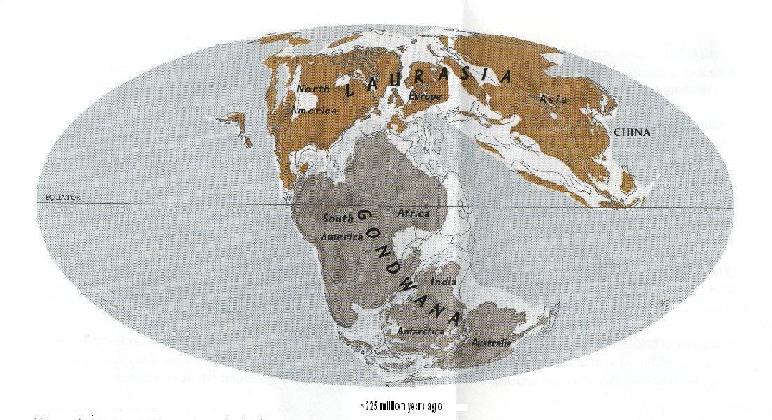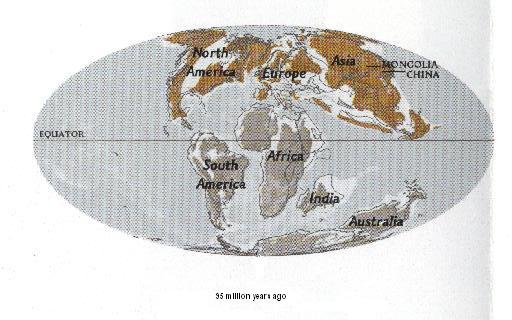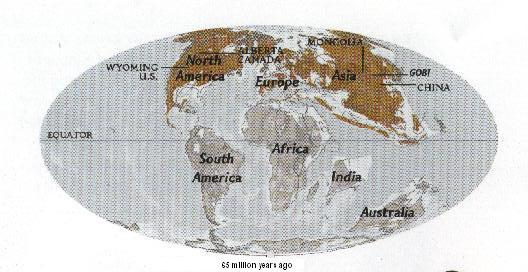The Indian Continent
About 225 million years ago, India was a large island situated off the
Australian coast. A vast ocean, the Tethys Sea, separated India from the
Asian continent. When Pangaea broke apart about 200 million years ago, India
began to forge northward. About 80 million years ago, India was located
roughly 6,400 km south of the Eurasian continent, moving northward at a rate
of about 9 m a century. When India rammed into Eurasia about 40 to 50 million
years ago, its northward advance slowed by about half. The collision resulted
in the rapid uplift of the Himalayas and the Tibetan Plateau. In just 50
million years, peaks such as Mt. Everest have risen to heights of more than
9 km. The impinging of the two landmasses has yet to end. The Himalayas
continue to rise more than 1 cm a year a growth rate of 10 km in a million
years!
The European Continent is part of the bigger Eurasian Continent
separated by the Ural mountains. We consider Europe as a separate continent,
not only because of the cultural and racial differences and mountain borders,
but also because Europe considered itself a continent and told the world
that this part of Eurasia was a continent. When Europe (~ 750 million people)
is considered a separate continent from Asia, what is the reason Indian
Continent (~1.5 billion people) is accorded a status of a sub-continent?
The Indian Continent, owing to its origins and geographical isolation
by the Himalayas from Eurasia and the cultural and racial differences from
Eurasia, should be regarded as a separate continent. We should all
give due respect to the Indian Continent and address it as a Continent.
For more on the Indian Continent, please visit:
Vepachedu Home Page/references
The Indian Continent
and Tibet
The Himalayas
Gondwana Land
Sreenivasarao Vepachedu, February 1999 (updated 2007)
Copyright ©1998-2010
Vepachedu Educational Foundation,
Inc
Copyright Vepachedu
Educational Foundation Inc. All
rights reserved. All information is intended
for your general knowledge only and is not a substitute
for medical advice or treatment for special medical
conditions or any specific health issues or starting
a new fitness regimen. Please read
disclaimer.




